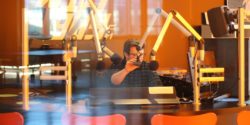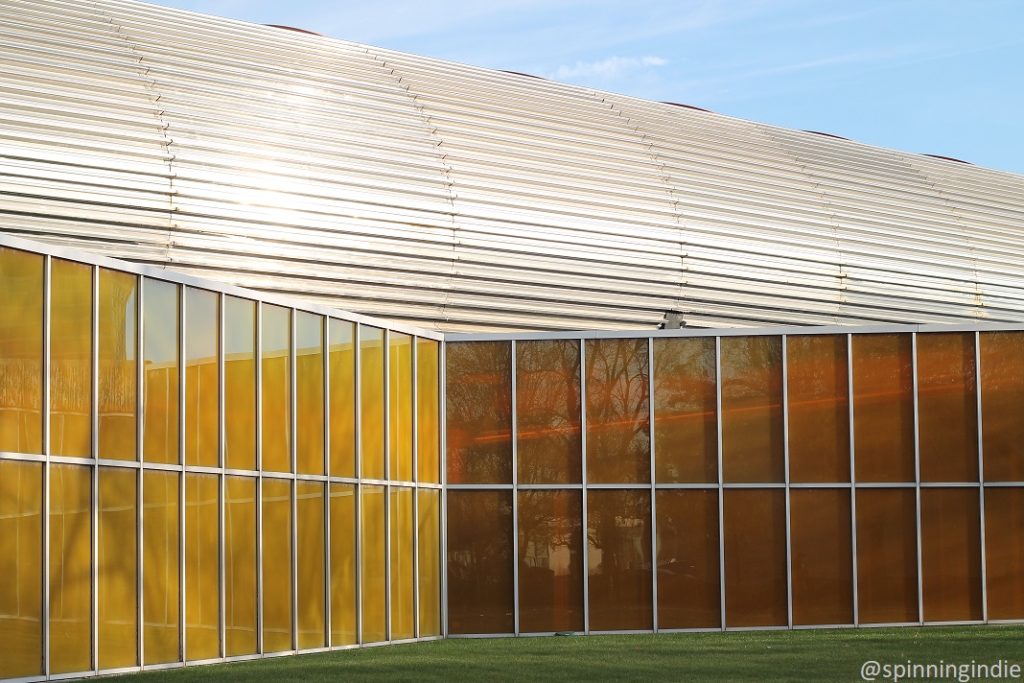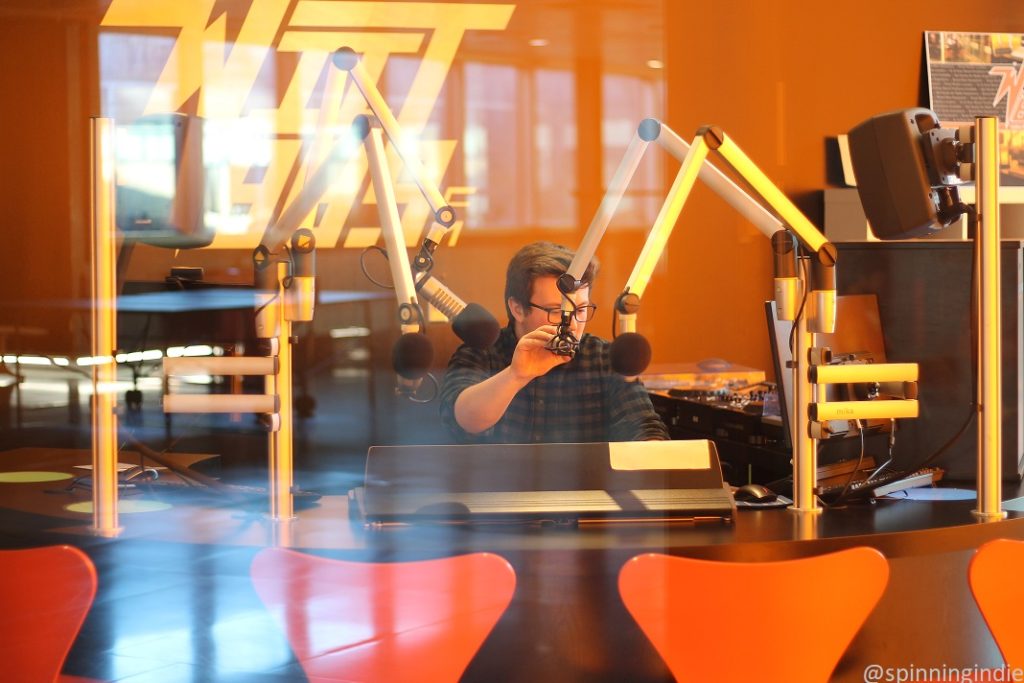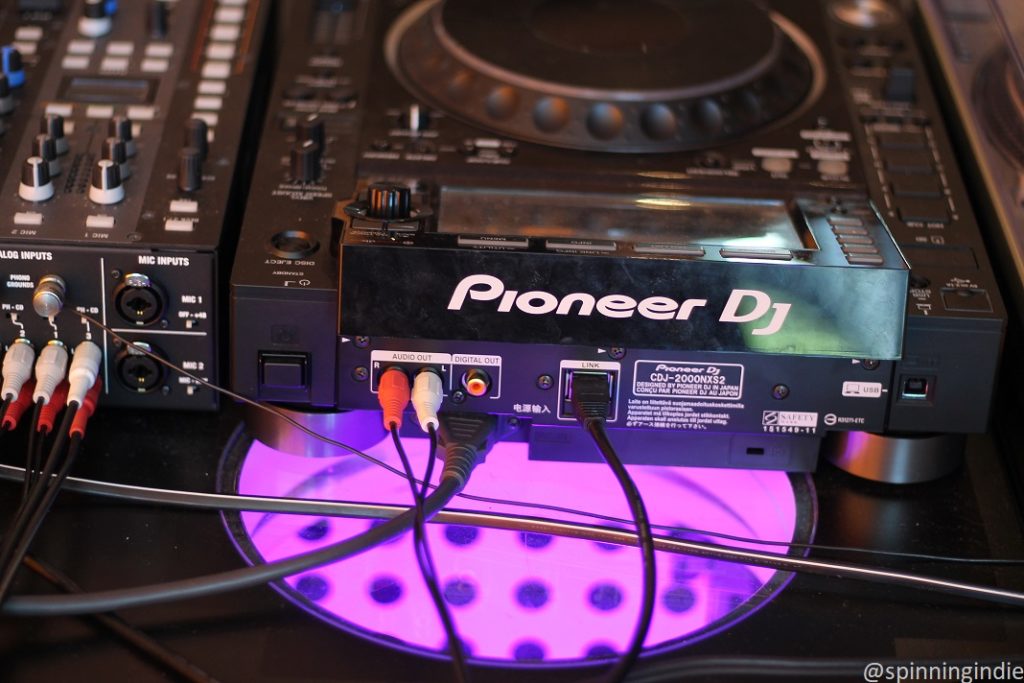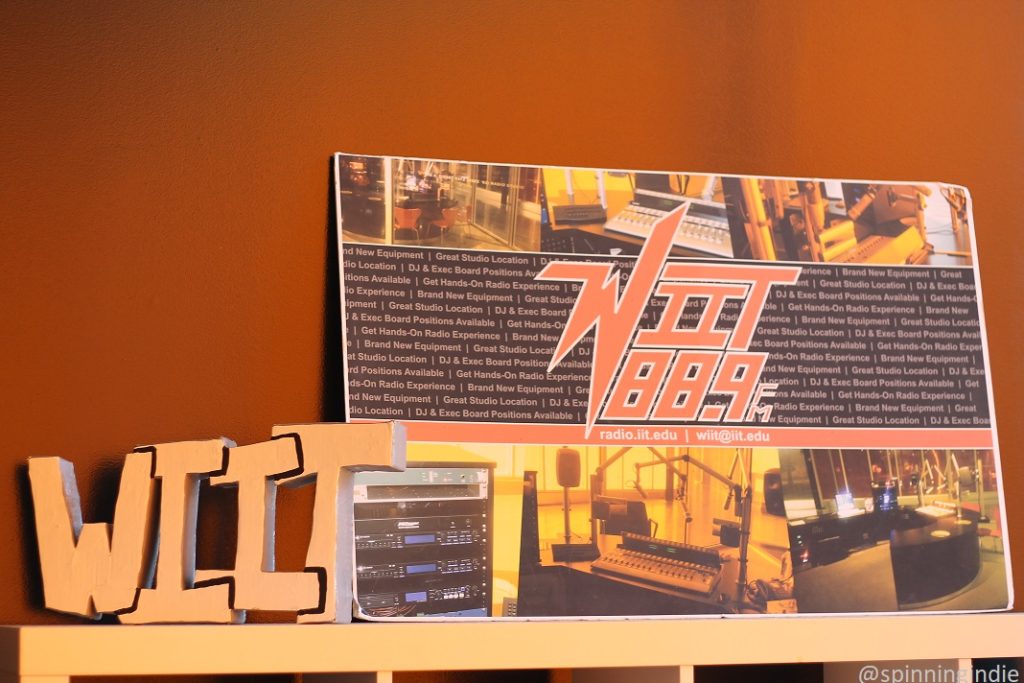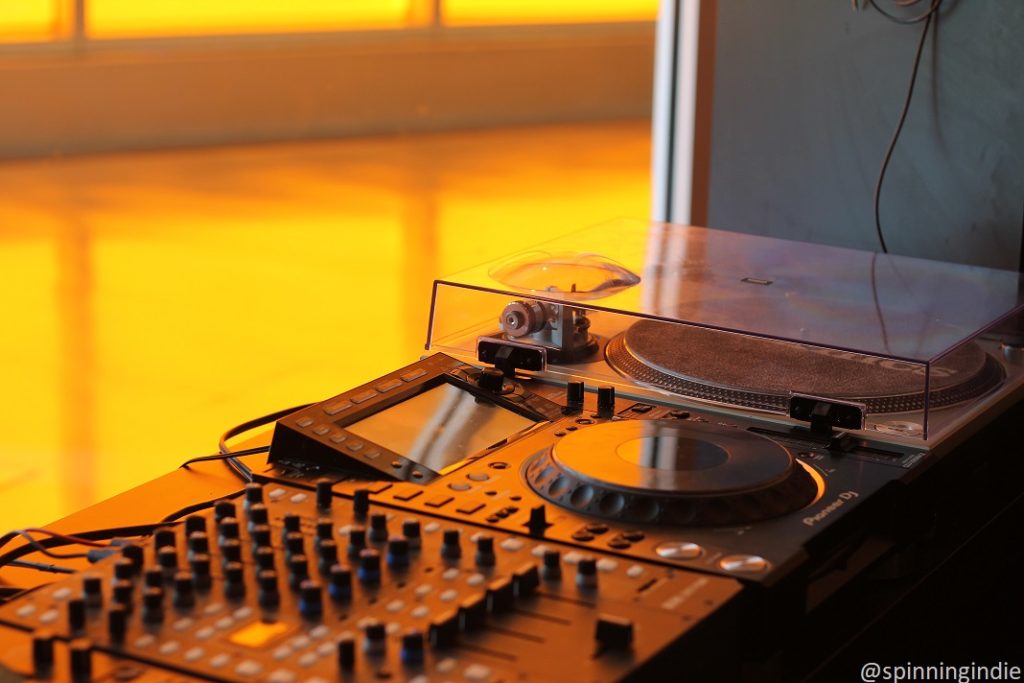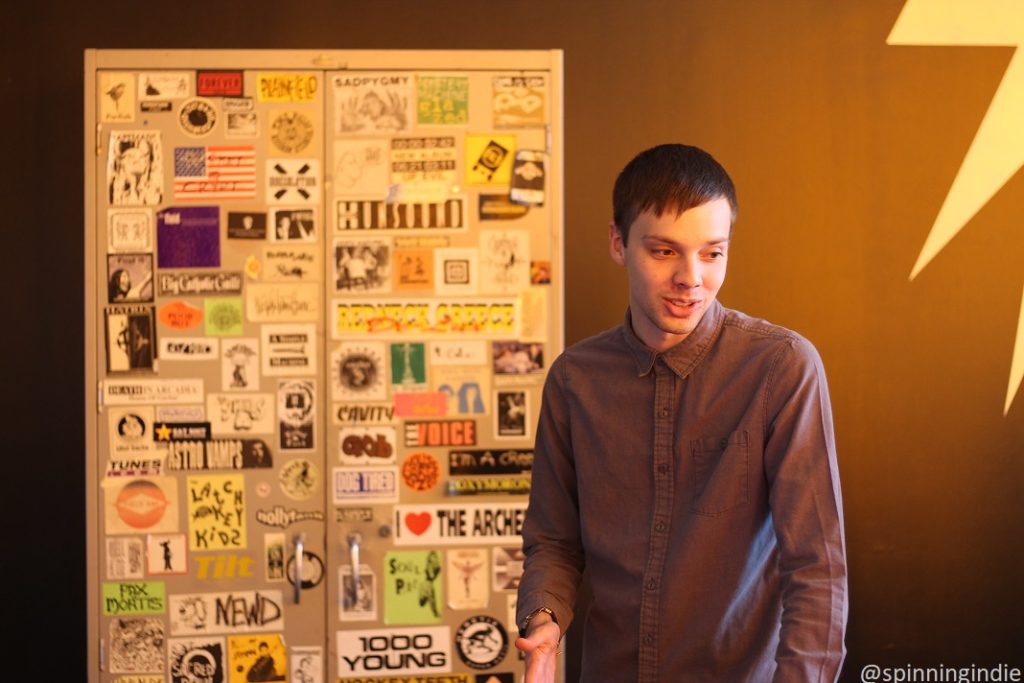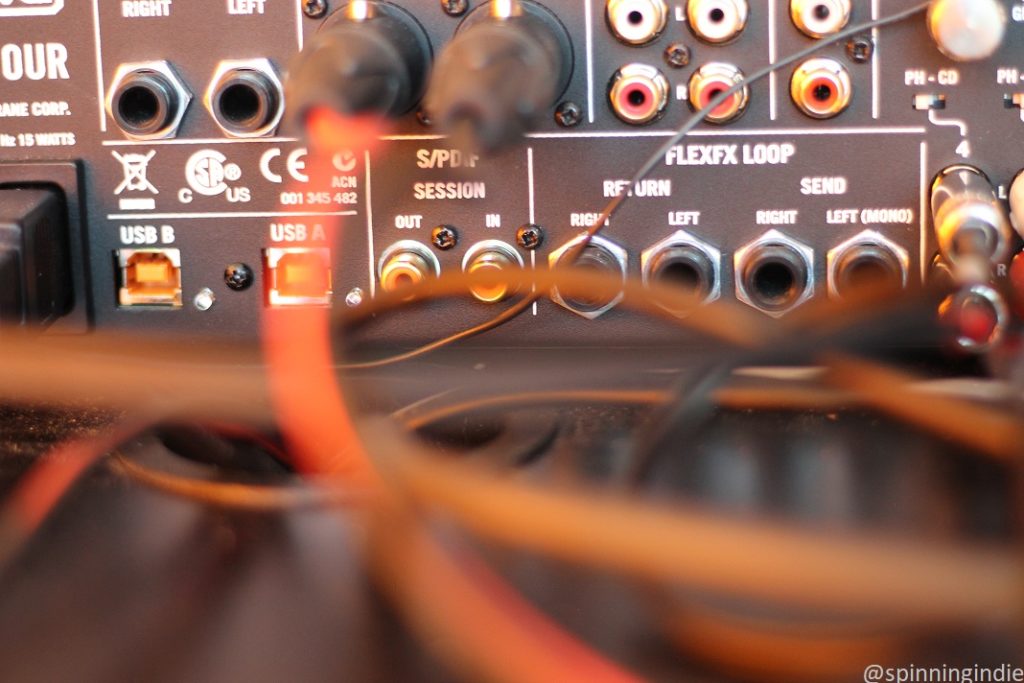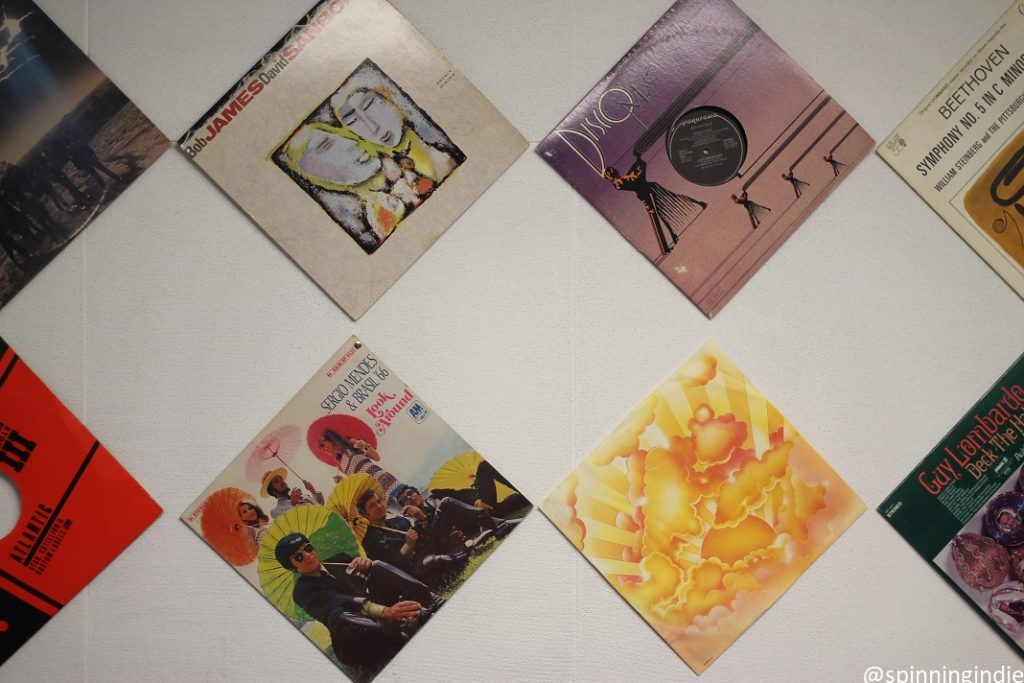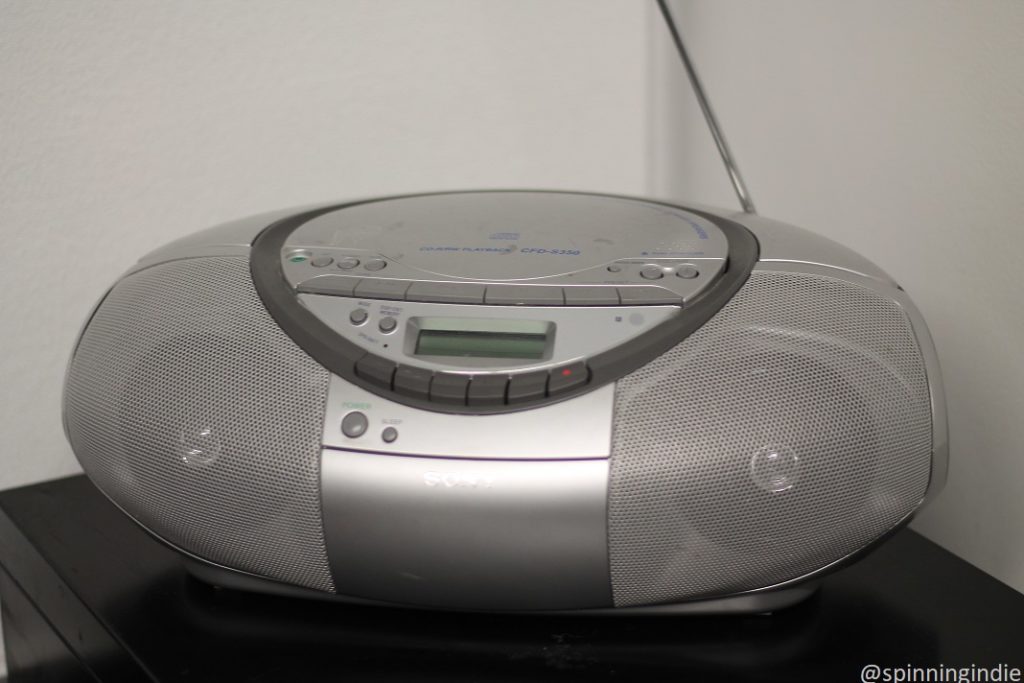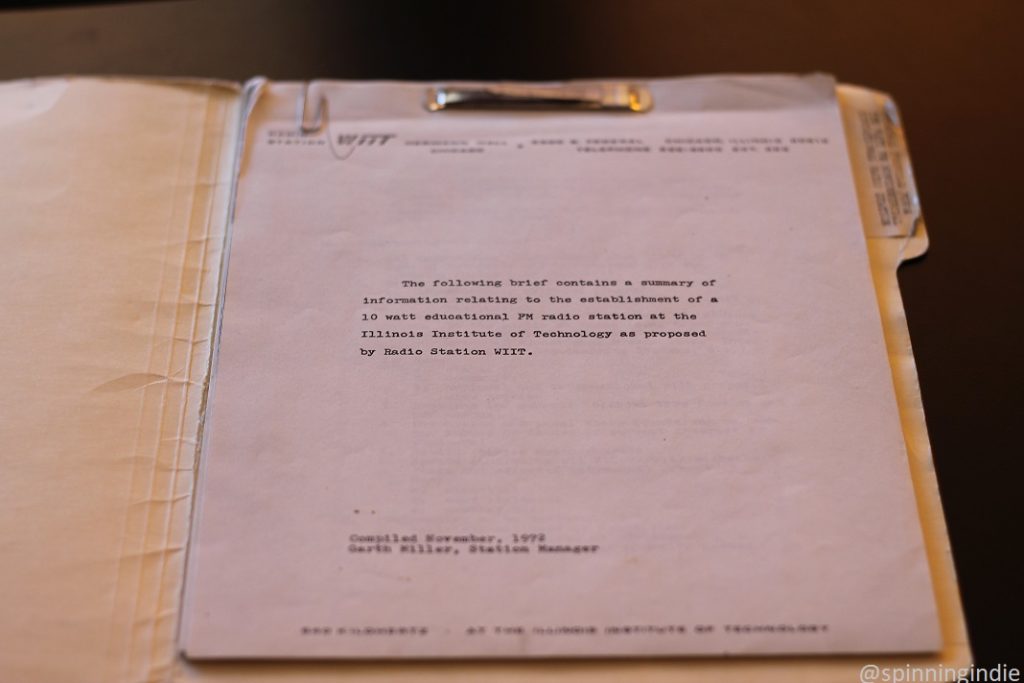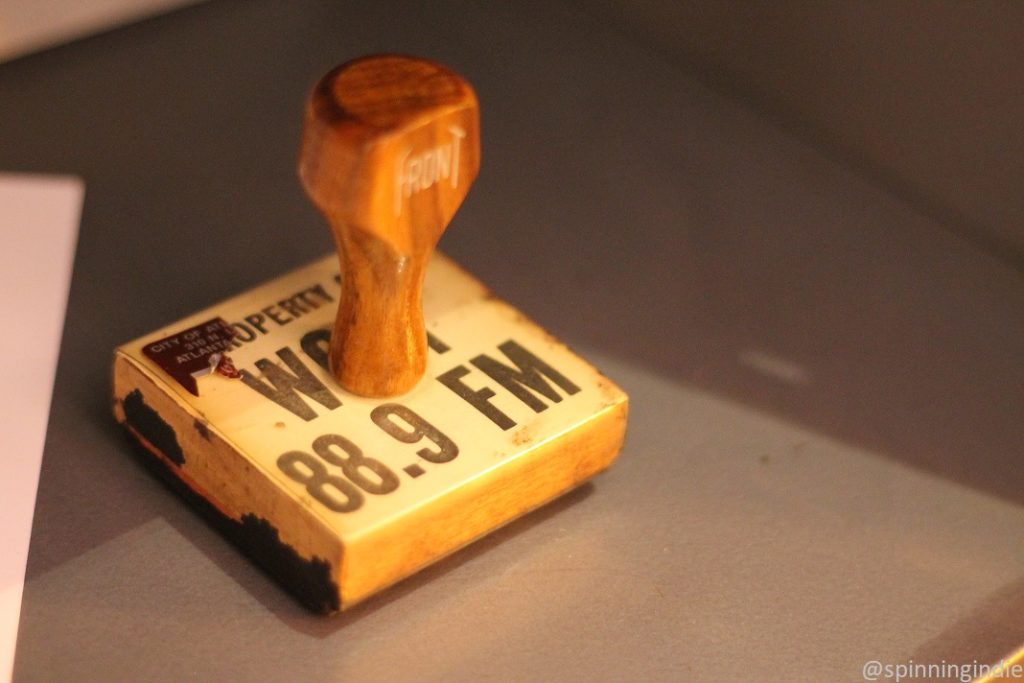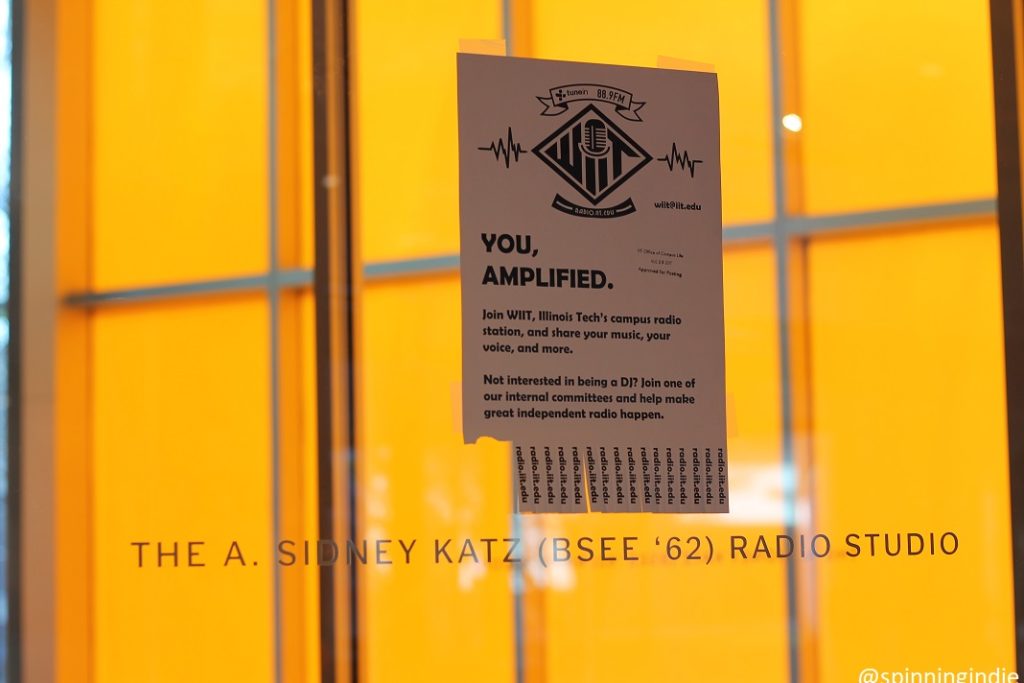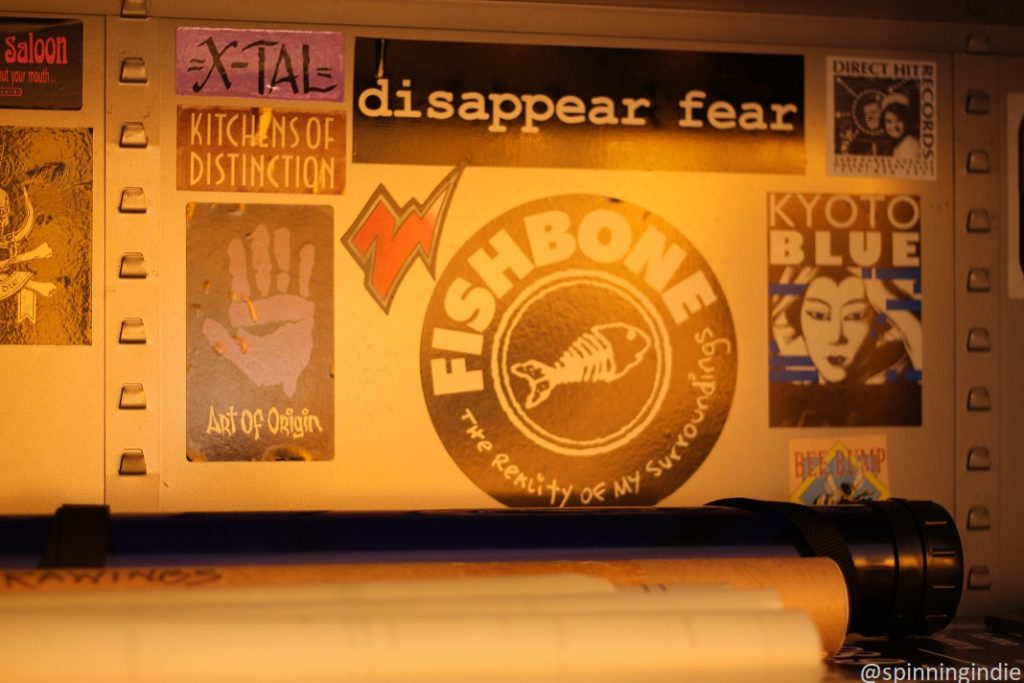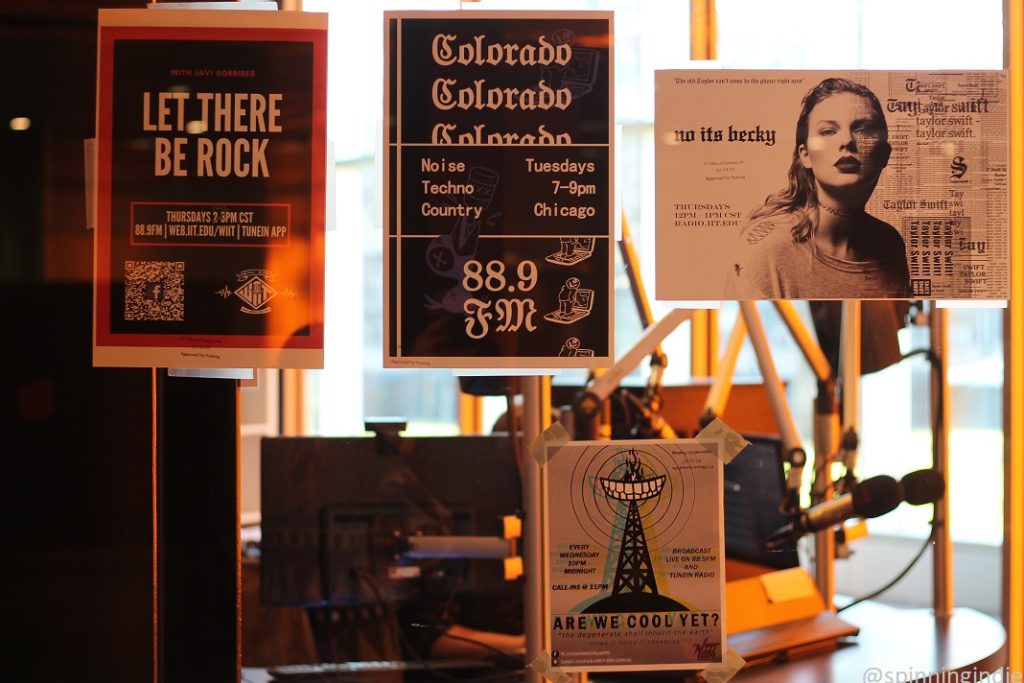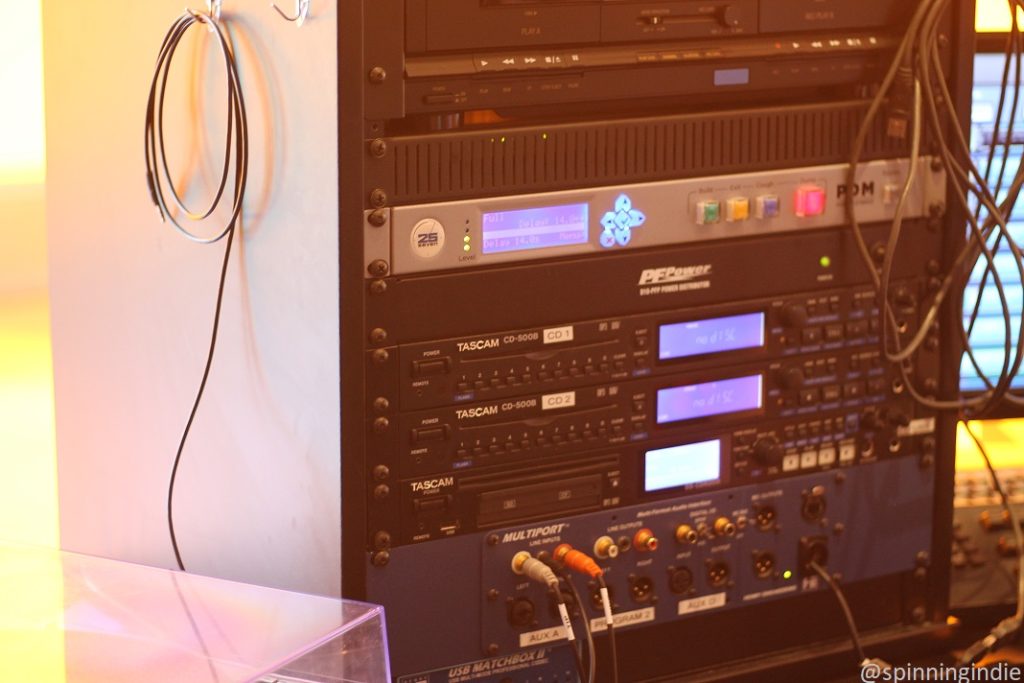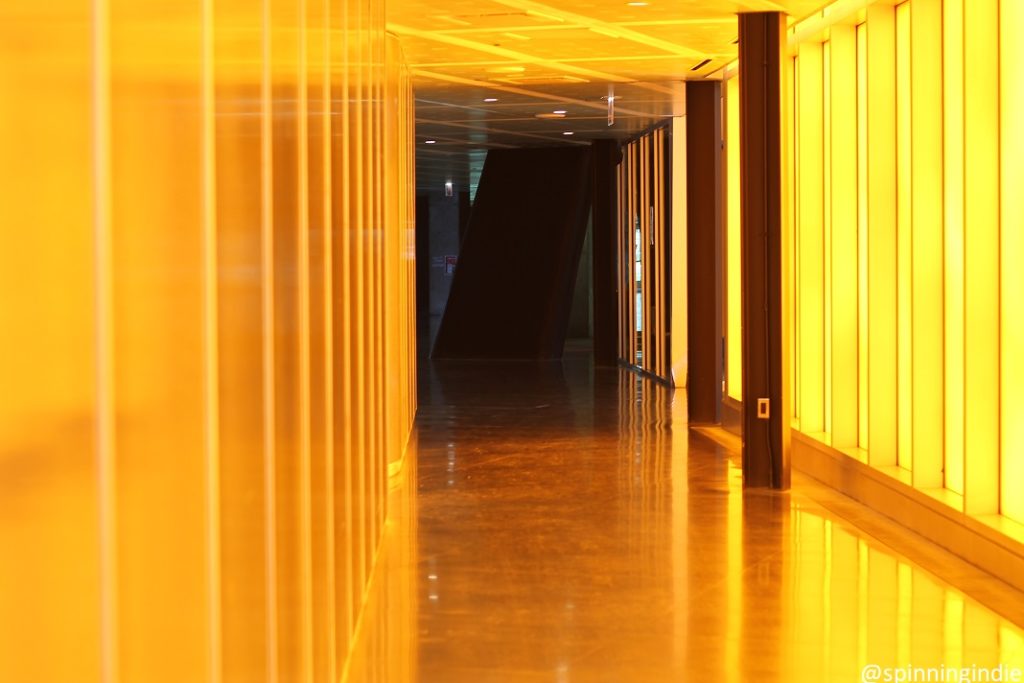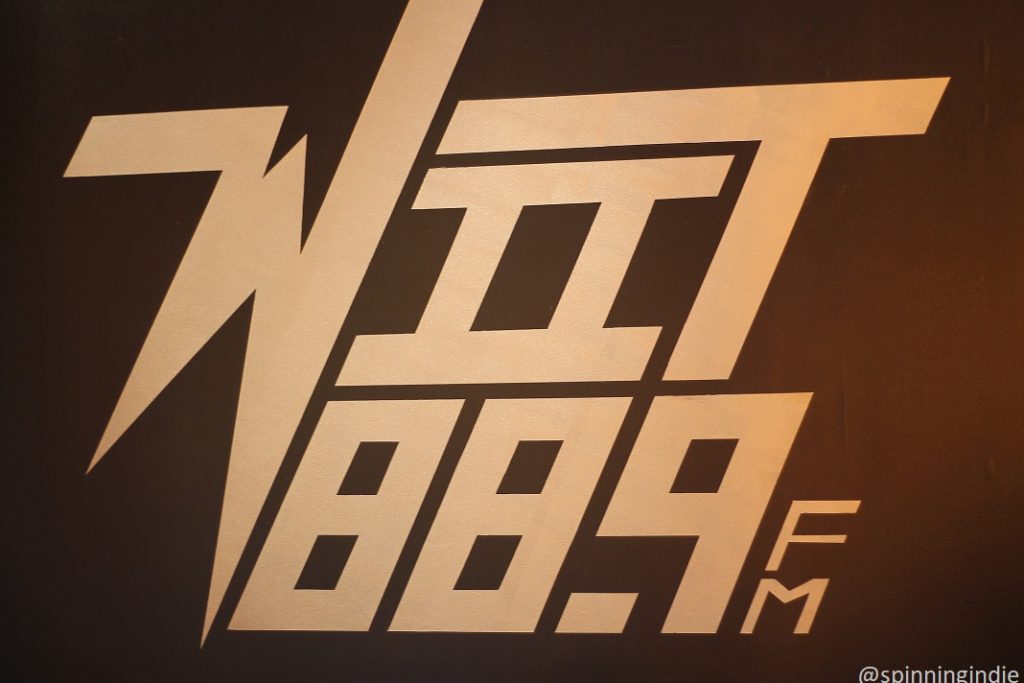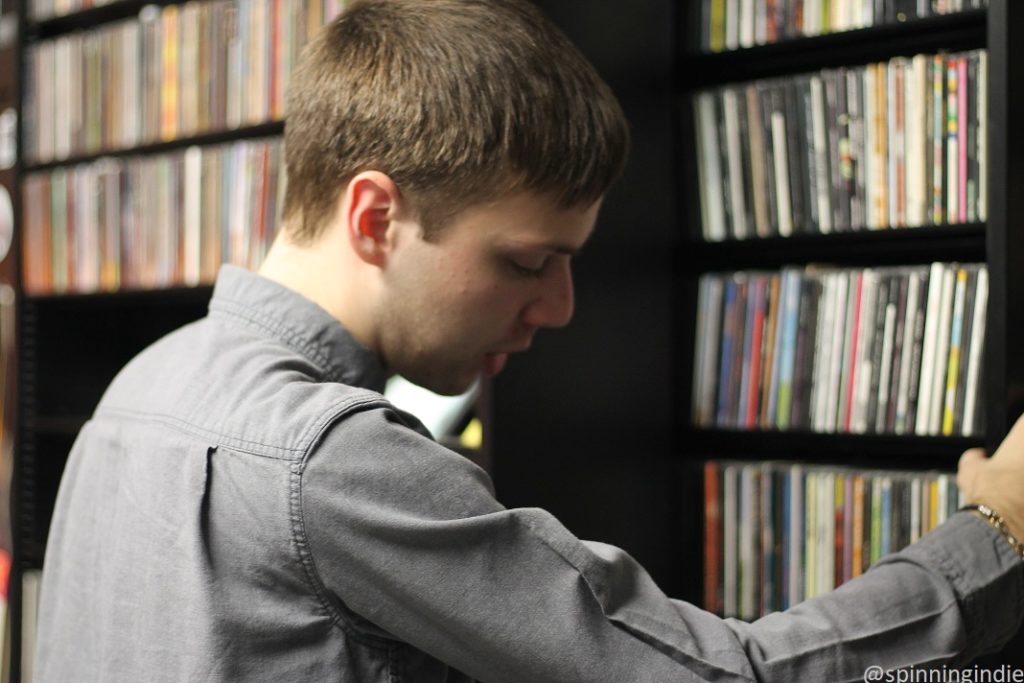With so many college radio stations in the Chicago area, it can be tough to decide which to visit first. WIIT 88.9 FM at Illinois Institute of Technology (IIT) jumped to the top of my list when I learned that it was potentially one of the oldest college radio stations in the country. Coupled with its adventurous freeform music shows and the studio’s alluring modern architecture; this collection of factors led to my visit on Friday, December 1, 2017.
Located in IIT’s McCormick Tribune Campus Center, WIIT inhabits a mesmerizing and colorful space in the 14-year-old Rem Koolhaas-designed building in Chicago’s Bronzeville neighborhood. When we arrived, it was impossible to miss the glass-walled WIIT studio, as it overlooked a thoroughfare on the main level, near the primary entrance to the building.
A dramatic setting, the on-air studio basked in an amber glow during our lunch-time visit, with light streaming in from nearby windows covered in an orange honeycomb pattern. Spacious and triangular in shape, WIIT’s studio was arranged such that the on-air DJ is positioned with a panoramic view, including the angular terminus of the triangle. Different colored lights emanate from below the console table, programmed to interact with the music. As it’s a college radio station at a tech school, I wasn’t surprised to hear that the lights are controlled by an app.
I found myself captivated by the WIIT studio, particularly because of the lighting and its spaciousness. Location scouts have also been hip to the design and the room was featured in season two of the television show “Empire,” standing in for a commercial radio station. WIIT Station Manager Soren Spicknall reminisced that during filming, the show producers accidentally took WIIT off the air, which station personnel were understandably not pleased about.
While DJs mostly bring in their own music, the station also has a collection of CDs that are in the process of being digitized. A music director curates the shelves of new releases. Hosts can play material using turntables, CD players, cassette decks, and through digital inputs in the on-air studio.
With such modern digs, it’s easy to overlook WIIT’s notable history. And, sadly, much was destroyed or thrown away during station moves. Spicknall pointed to a sticker-covered cabinet in the studio, telling me that they made a point to save it. In order to ensure that the past is preserved and celebrated going forward, the station appointed an official station historian less than two years ago.
Illinois Institute of Technology was formed in 1940, with the merger of the Lewis Institute and the Armour Institute of Technology. Located at the site of the current IIT campus, the Armour Institute began in 1893 and the Lewis Institute (which was on the west side) began in 1895. From 1899 to 1901, famed inventor Lee de Forest was an instructor at Armour Tech and conducted important wireless experiments while on campus. According to IIT Magazine,
Although instructor Lee de Forest taught at Lewis Institute and performed research at Armour Institute of Technology (AIT) for only a brief time, he entered into the wireless annals with the first successful long-distance telegraphy experiments while on what would become IIT Main Campus. A prolific inventor, de Forest, along with his business partner, E. H. Smythe, developed an improved telegraphic detector, which they called the responder, and conducted a series of wireless-transmission distance trials in the long hallways of Main Building as well as on its roof. In 1901 the duo met with further victory when they sent a signal-the letter ‘h’ in Morse code-from the roof of Main Building to the now nonexistent Lakota Hotel at 30th Street and Michigan Avenue, about a half-mile from Main Campus.
Tasked with many projects, WIIT’s historian has been digging into the campus’ radio past, including scouring through vintage student newspapers and doing direct outreach to station alumni. Over email, WIIT Historian Steven Milan Moreno provided me with a preview of some of his discoveries. According to Moreno,
Radio on the campus of Illinois Tech (or Armour Tech as it was known back then) has been documented as far back as the fall of 1914, when the Armour Radio Association was created by ten students. The founder and first president of the association was H.D. Stevers, who would go on to demonstrate radio technology for the entire campus by playing Victrola music wirelessly to the amazement of all in attendance. The actual intent of the demonstration was not for it to be used for entertainment but for it to be used in WWI as an effective means of communication. The association was temporarily disbanded after the US entered the war, but reconvened a year after the end of the war under the call sign 9NV.
Unsurprisingly, the subject of H.D. Stevers’ May, 1920 thesis for his B.S. in Electrical Engineering was The Design and Construction of a Radio Station for the Armour Institute of Technology. Stevers writes in his introduction, “Since its founding in the Fall of 1914, the Armour Radio Association has felt the lack of an actual station with real apparatus. This thesis describes the station which has been built to fill this need.” This amateur radio station was built by 1920 and was housed in the school’s physics laboratory. It’s unclear how long that equipment was in use, but amateur radio was revived in the same location, with the creation of Armour Tech Radio Station 9YL in 1922 by the Armour Tech Radio Club, as outlined in a May, 1923 issue of The Armour Engineer.
Spicknall recounted that a group of four alumni recently flew in and spoke to WIIT members about life at the station in the 1960s. They also brought along recordings and curios from their time on the air. As I’ve heard over and over again, alumni also revealed to current WIIT participants that the station was a “huge bright spot,” even if other college experiences weren’t always as positive.
The current studio was renamed the A. Sidney Katz Radio Studio in 2010 in honor of a 1962 alumnus who had also been a DJ at the station. According to IIT, “During his time as a student at IIT, Katz worked as an engineering technician and a part-time math tutor, while hosting a DJ program at the student radio station which was then housed in the basement of a campus fraternity house.”
More recent station history is a bit murkier, although Spicknall pointed out that WIIT has played an important role in Chicago hip hop. He revealed that rapper/producer Lupe Fiasco formerly hosted a radio show at WIIT. The Monday night show, FNF Radio, was on the air by around 2005. Moreno added, “Interestingly enough, recent station history is by far more scarce in our records. As for our role in hip hop, I know we had significant ties to the genre in the past and I am planning to continue my research in the area in the coming months.”
Flashing forward to today, WIIT is a freeform station, airing an interesting mix of shows, with many reflecting the diverse, international student body at IIT as well as within the nearby community. Music programs include those focused on Taylor Swift, Bollywood sounds, British invasion rock, “nerdcore,” hip hop, EDM, fusion music from India and the west, music from Panama, as well as programs that play a range of genres (gospel, rock, country, 80s music, etc.), and some live mix shows. Talk and talk/music hybrid programs include “Womyn Power Hour,” “The Toy Reporters” (fan culture), “Sharon’s Uncommon Views on Everyday Issues” (emphasis on seniors, disabled, diabetic care), and “21st Century Fountainhead” (architecture and the city). WIIT is also partnering with IIT’s student government and student newspaper on programming, including a weekly recap of student news. Spicknall marveled that a listener might tune in to hear Taylor Swift, political talk, and noise music back-to-back on a given day.
Around 25% of the shows are run by non-students, with some hosted by long-time volunteers. Spicknall explained that WIIT’s location at the boundary of the distinct neighborhoods of Bronzeville and Bridgeport has been an important part of the station’s identity. He told me, “We’ve always stood at the intersection…as a melting pot” for students and community members. These connections also bridge across neighborhoods and radio stations, as one long-time DJ, Earl Hall (host of “The Duke’s Classic Soul and R&B Revue”), also hosts a salsa music show at University of Chicago’s college radio station WHPK.
On campus, it’s easy to get the word out about WIIT, particularly owing to its location in a heavily trafficked student center that Spicknall described as the “social center” of campus. Ping pong tables, lounge areas, and eateries are steps away and while sitting in the station office, we heard the non-stop tapping sound of ping pong balls, as games were being played just outside WIIT’s door. Live programs run when the building is open, from 7am to midnight, with the studio in view of all who travel through the building. Speakers outside the studio door and throughout the building pipe in sounds from WIIT to building visitors. Automation (which is actively updated by the station’s music director) takes over during the late night hours and WIIT has the ability to also run pre-recorded shows during that time.
Spicknall is happy with the state of WIIT, postulating that there is more student interest in the station than there was a decade or so ago, with perhaps the number of student DJs the highest it’s been since the mid-1990s. There are so many student hosts at the moment, that the station is achieving its goal of 75% students, so is about to embark on a competitive process to add some additional non-student shows. Community-hosted shows are highly coveted and there is a backlog of hundreds of applications for these slots.
Proud that WIIT is becoming increasingly welcoming to all sorts of folks, he pointed out that management wants it to be a place where all of the on-air content, including public service announcements, reflects the station’s commitment to “openness of thought.” On a campus that is 70% male, Spicknall estimated that around 40% of WIIT participants are female and one program, “Audibly Neurodivergent” is hosted by a non-binary individual with “multiple differences.” He praised the show, telling me that it’s been a great platform, as it’s had a lot of guests with “interesting intersecting identities.” For Spicknall, doing a radio show is “sort of a respite” from the “rigorous” coursework at IIT. He said that it’s an opportunity for many students to take part in a “passion project,” that is completely separate from their majors and career aspirations.
Thanks so much to Soren Spicknall for taking the time to talk to me and tour me around WIIT and to Steven Milan Moreno for all of the amazing historical information, particularly since they were in the midst of finals! 4/4/18 update: Hear some of my interview with Spicknall on Radio Survivor Podcast #136, during which I discuss my tours of WIIT and WKCR.
This is my 142nd radio station field trip report, with more on the way from my Chicago and Washington, D.C. trips. My most recent field trips are located on Radio Survivor and a full list of all my station tour reports is archived on Spinning Indie.

